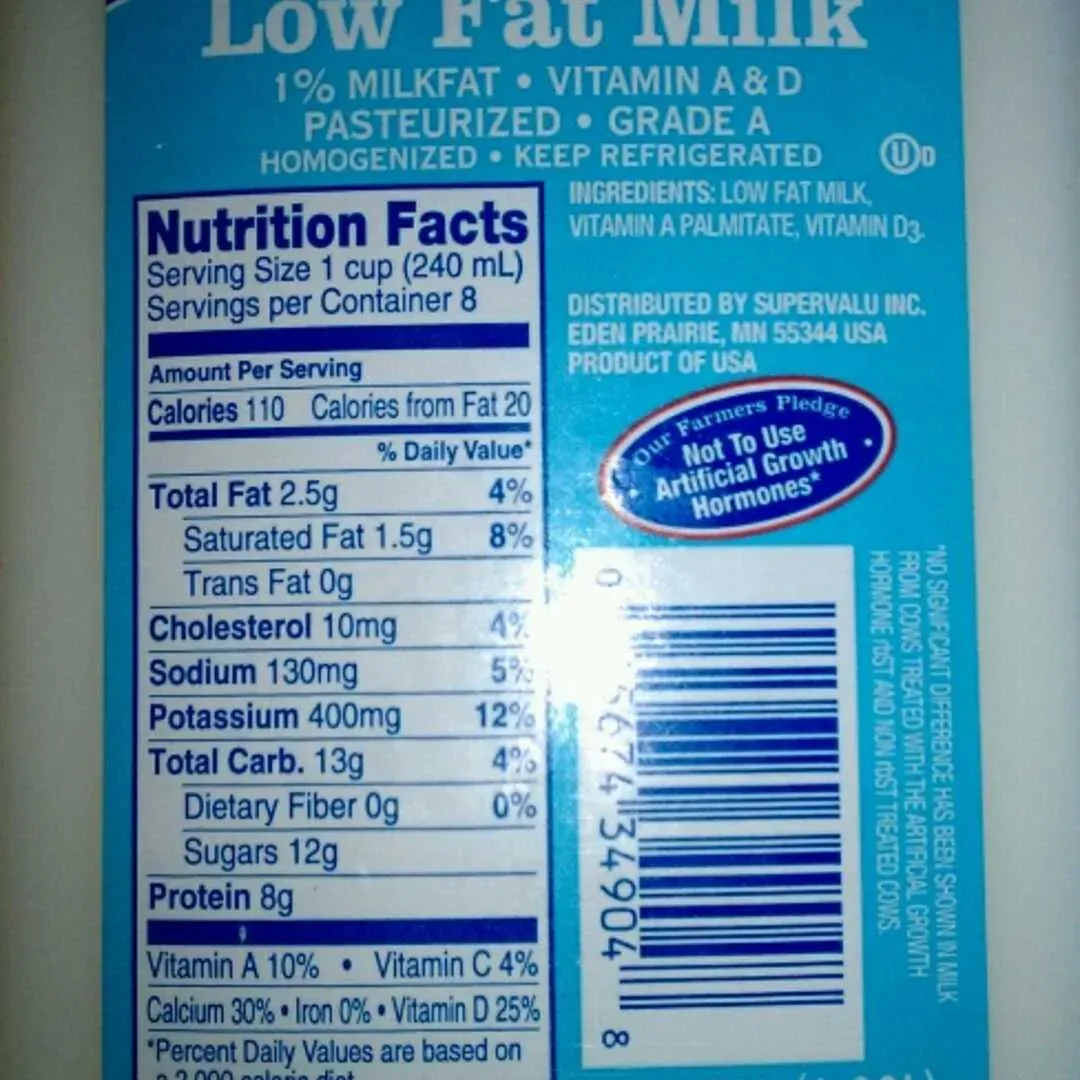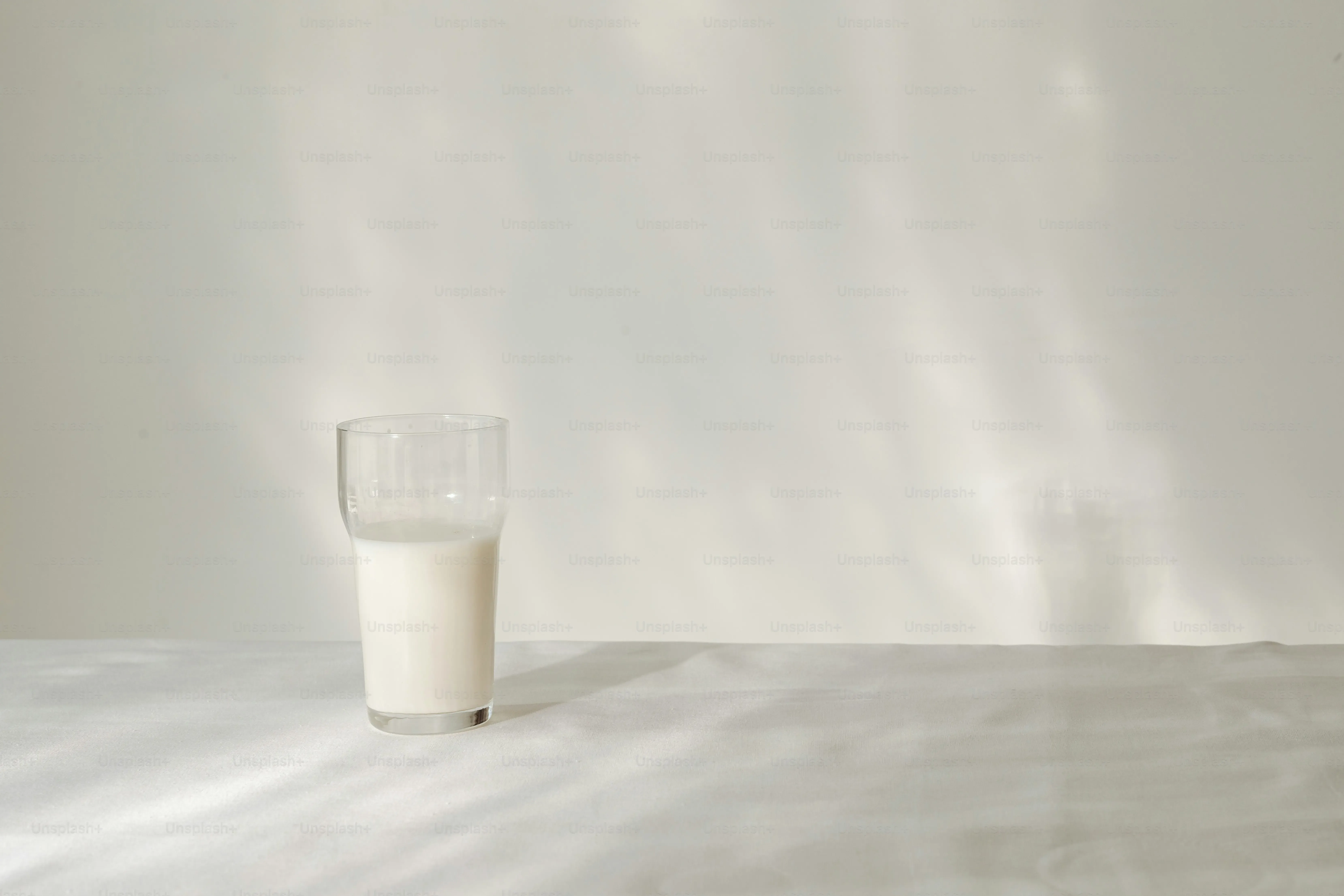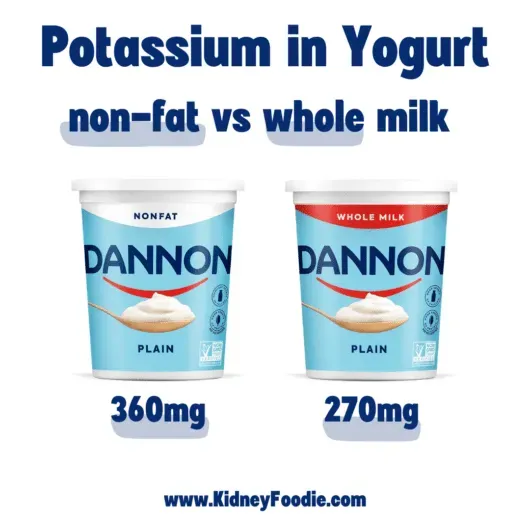Table of Contents
You grab a glass of low fat milk, thinking you're making a solid, healthy choice. And often, you are. It's a good source of calcium, protein, and other vitamins. But have you ever stopped to think about the minerals hiding in that glass, like potassium? Understanding the levels of **potassium in low fat milk** is more important than you might initially believe, especially if you're managing certain health conditions or simply trying to keep track of your nutrient intake.
Understanding Potassium in Low Fat Milk

Understanding Potassium in Low Fat Milk
What's the Deal with Potassium Anyway?
Alright, let's cut to the chase. You're drinking low fat milk, probably because you're watching calories or fat intake. Good for you. But lurking in that seemingly simple beverage is a mineral called potassium. Think of potassium as the body's unsung hero. It's not as flashy as calcium for bones, but it's vital for keeping your heart beating correctly, your muscles flexing, and your nerves firing signals. It's a key player in maintaining fluid balance inside and outside your cells. Without enough potassium, things just don't hum along right. It's a big deal for overall cellular function and keeping your blood pressure in check, assuming your kidneys are doing their job filtering things properly. So, yeah, it's more than just another mineral listed on the nutrition label; it's fundamental.
How Much Potassium is Hiding in Your Low Fat Milk?
Now, for the numbers you probably came here for. When we talk about **Understanding Potassium in Low Fat Milk**, we're looking at a significant source. An 8-ounce cup, the standard serving size, typically packs around 350-400 milligrams of potassium. This isn't a tiny amount; it contributes a decent chunk to your daily recommended intake, which is usually around 2,600 mg for women and 3,400 mg for men. Compare that to, say, a banana, often hailed as the potassium king, which has roughly 422 mg. So, your glass of low fat milk is playing in the same league as a banana when it comes to this particular mineral. It's naturally present in milk because cows produce it, and it stays there when the fat is reduced.
- One cup of low fat milk: ~350-400 mg Potassium
- One medium banana: ~422 mg Potassium
- Daily recommended intake for adults: 2,600-3,400 mg Potassium
Why Potassium Levels are Important (Especially for Some Diets)

Why Potassium Levels are Important (Especially for Some Diets)
It's Not Just Another Number
Look, we throw around nutrient names like confetti these days, but potassium isn't just filler text on a carton. This mineral is fundamental to how your body operates. We're talking about the electrical system that makes your heart pump, the signals that tell your muscles to move, and the delicate balance of fluids that keeps everything in check. Think of it as the electrician, the traffic cop, and the plumber all rolled into one for your insides. When potassium levels are off, you can feel it – muscle cramps, fatigue, even irregular heartbeats. For most folks eating a varied diet, getting enough potassium isn't a major struggle, and the potassium in low fat milk contributes positively to this balance. But "most folks" isn't everyone.
When 'Good' Becomes 'Complicated'
While potassium is generally a beneficial nutrient, its abundance in foods like **potassium in low fat milk** becomes a point of focus for specific dietary needs. For someone with healthy kidneys, excess potassium is simply filtered out and excreted. No drama. Your kidneys are designed for this kind of housekeeping. However, when kidney function declines significantly, this filtration system breaks down. Potassium can build up in the blood, leading to a condition called hyperkalemia. This isn't just uncomfortable; it can be downright dangerous, potentially causing severe heart rhythm problems. This is where paying close attention to dietary potassium, including sources like milk, becomes less about general health and more about critical management.
- High Potassium Concern: Chronic Kidney Disease (Stages 4 & 5)
- Moderate Potassium Concern: Certain medications (like ACE inhibitors)
- General Benefit: Most healthy adults
Kidneys Call the Shots
The primary reason you'll hear about limiting potassium is almost always tied to kidney health. When kidneys aren't functioning correctly, they lose the ability to effectively remove potassium from the bloodstream. Imagine a clogged drain; eventually, the sink overflows. That overflow, in this case, is excess potassium circulating in your body, and it messes with nerve and muscle cells, particularly those in the heart. This is why individuals with advanced kidney disease (typically stages 4 and 5) are often on strict low-potassium diets. They need to carefully track every milligram from every source, and a seemingly innocent glass of milk, which contains notable **potassium in low fat milk**, suddenly requires careful consideration and likely limitation, often advised by a registered dietitian specializing in kidney care.
Comparing Potassium in Low Fat Milk to Other Dairy Options

Comparing Potassium in Low Fat Milk to Other Dairy Options
Skim vs. Whole: Does Fat Content Matter for Potassium?
So you've got your glass of low fat milk, clocking in around 350-400 mg of potassium per cup. Now, how does that stack up against its dairy cousins? Let's start with whole milk. Surprisingly, the amount of fat doesn't dramatically change the potassium count. A cup of whole milk typically contains slightly less, maybe 320-350 mg. Skim milk, which has virtually no fat, often has the highest potassium content among liquid milks, sometimes pushing towards 380-420 mg per cup. Why the slight difference? It's not about the fat itself, but often relates to how the milk is processed or concentrated slightly when fat is removed, leaving the water-soluble minerals like potassium a bit more concentrated in the remaining liquid. So, while you might choose low fat for calorie reasons, you're not dodging potassium by skipping the whole milk.
Beyond the Liquid: Yogurt, Cheese, and Potassium
Dairy isn't just about the liquid stuff you pour in your cereal. Yogurt and cheese are also dairy powerhouses, but their potassium levels can vary wildly compared to **potassium in low fat milk**. Yogurt, especially plain varieties, can be a significant source, often containing more potassium per serving than milk due to its more concentrated nature. An 8-ounce serving of plain yogurt might have 400-500 mg or even more depending on the type. Cheese, on the other hand, generally has much lower potassium levels. Hard cheeses like cheddar or Swiss typically contain less than 100 mg per ounce. Soft cheeses might have a bit more, but they are still far below the levels found in milk or yogurt. The processing and removal of whey during cheese making significantly reduces the mineral content, including potassium.
Dairy Product (1 cup/serving) | Approximate Potassium (mg) |
|---|---|
Low Fat Milk (8 oz) | 350-400 |
Whole Milk (8 oz) | 320-350 |
Skim Milk (8 oz) | 380-420 |
Plain Yogurt (8 oz) | 400-500+ |
Cheddar Cheese (1 oz) | ~30 |
Choosing Your Dairy: Why Potassium Counts
Understanding these differences isn't just trivia for your next dinner party. It's crucial for making informed dietary choices, particularly if you're navigating specific health needs. For someone on a potassium-restricted diet, knowing that yogurt packs more punch than milk, or that cheese is a safer bet, is essential. While **potassium in low fat milk** is notable, it might be manageable within a carefully planned diet. A large serving of yogurt, however, could push someone over their daily limit quickly. This highlights why blanket advice rarely works. Your personal health situation dictates which dairy choices fit best into your daily intake goals and restrictions.
Potassium in Low Fat Milk: What About Kidney Diets?

Potassium in Low Fat Milk: What About Kidney Diets?
When Your Kidneys Are On Strike
Alright, let's get real about **Potassium in Low Fat Milk: What About Kidney Diets?**. This is where the conversation shifts from general health benefit to specific medical necessity. For most of us, potassium is our friend, helping our bodies function smoothly. But if your kidneys aren't working properly, particularly in later stages of chronic kidney disease (CKD), that friendly mineral can become a real problem. Think of your kidneys as the body's sophisticated filter system. When they're damaged, they can't filter out excess potassium from your blood effectively. This build-up, called hyperkalemia, can mess with your heart rhythm, causing palpitations or even more serious issues. So, while low fat milk is a good source of many nutrients, its potassium content means it's often one of the first things people on a strict kidney diet need to limit or avoid entirely. It’s not about milk being inherently bad; it’s about a compromised system struggling to handle a normal load.
Navigating Milk Choices: Beyond Potassium in Low Fat Milk

Navigating Milk Choices: Beyond Potassium in Low Fat Milk
Looking Past the Potassium Problem
so we've established that **potassium in low fat milk** can be a sticking point, especially if your kidneys are staging a protest. But ditching dairy isn't always just about potassium. Maybe you're lactose intolerant and milk makes you feel like you swallowed a balloon factory. Maybe you're vegan. Maybe you just hate the taste. Whatever the reason, if you're looking to move away from traditional milk, you've suddenly got a whole aisle of alternatives staring back at you – almond, soy, oat, rice, coconut, hemp... the list goes on. It's like a global summit of plant-based beverages. And just like with dairy, you can't just grab the first cool-looking carton. You need to know what's actually *in* that stuff, because they aren't all created equal, especially when it comes to minerals and additives.
Decoding the Alternative Milk Aisle
When you're **Navigating Milk Choices: Beyond Potassium in Low Fat Milk**, you need to become a label detective. It's not just about potassium anymore. Phosphorus is another big one, particularly for kidney patients, and some plant milks, like certain soy or hemp varieties, can be surprisingly high. Even worse, many are fortified with calcium and vitamin D, which sounds great, but the *type* of calcium or the addition of phosphate additives can be problematic. Calcium phosphate, for instance, is used to boost calcium content but also adds phosphorus. Sneaky, right? Some rice milks tend to be lower in both potassium and phosphorus naturally, making them a go-to for some restricted diets, but they often lack protein and other nutrients found in cow's milk. Soy milk offers protein but can be higher in potassium and sometimes phosphorus. Almond milk is often low in potassium and phosphorus, but check for thickeners and added sugars. It’s a minefield out there if you don't read the fine print.
- Always read the nutrition label carefully.
- Check for potassium and phosphorus content per serving.
- Look for phosphate additives (ingredients ending in "-phosphate").
- Consider protein content if that's important for your diet.
- Be mindful of added sugars and thickeners.
- Consult a dietitian for personalized recommendations, especially with health conditions.
Making Sense of Potassium in Your Milk
So, we've looked at the numbers: low fat milk contains a notable amount of potassium. For many, this is simply part of a balanced diet, contributing to essential bodily functions. But for others, particularly those navigating kidney health challenges, these levels require careful consideration. Comparing low fat milk to whole milk, skim milk, or plant-based alternatives reveals variations, none inherently "better" without context. The key takeaway isn't that potassium in low fat milk is good or bad, but that its impact depends entirely on your individual health status and dietary goals. Reading labels helps, but ultimately, understanding your own needs and consulting with a healthcare professional or registered dietitian is the most reliable way to determine the best milk or milk alternative for you. It's about informed choices, not just grabbing the carton with the lowest fat percentage.
